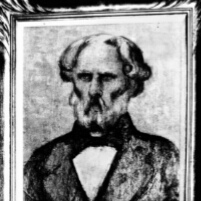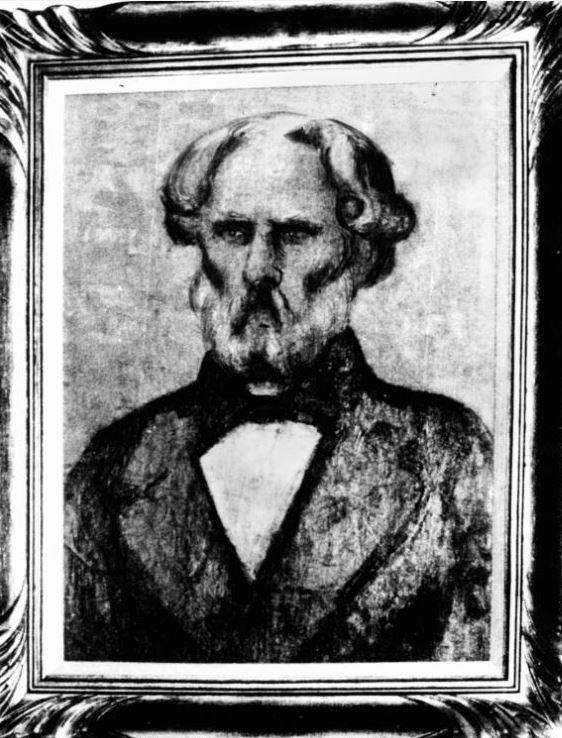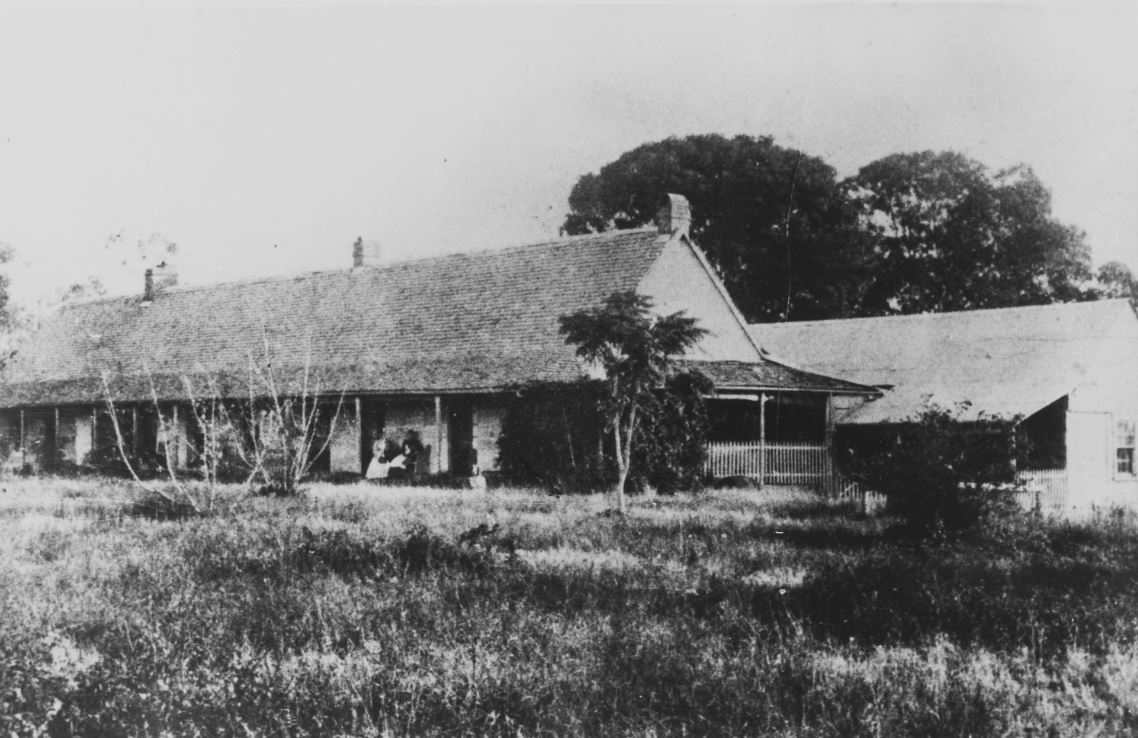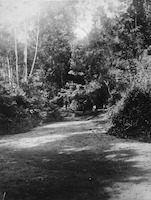When Stephen Simpson (1792 – 1869) arrived at the Moreton Bay settlement in 1840 he did so with a wealth of experience as a medical practitioner. This experience served him well during his first few years in the settlement but it was his integrity, fair-mindedness and skill as an administrator, especially in his roles as Commissioner of Crown Lands in the Moreton District and as Police Magistrate, which marked him as one of the most respected and influential men in the colony.
Simpson was born in 1792 to Mary and Thomas Simpson of Warwickshire. In his early years he was educated in Coventry and in 1813, enlisted in the British Army as an ensign with the 14th Light Dragoons. His military career was short lived and largely unremarkable. In 1817 he resigned with the rank of lieutenant to pursue medical studies firstly at the University of Bologna, then at the University of Edinburgh and finally, at the University of Bonn where he graduated in 1825.
Following his graduation, he travelled extensively in Europe as personal physician to members of the Russian royal family. It was at this time that he became interested in homeopathy, studying under Dr Samuel Hahnemann who was one of the earliest exponents of the practice. Simpson went on to become one of the first homeopaths in London and, in 1836 he published a book entitled, A Practical View of Homeopathy: Being an address to British practitioners on the general applicability and superior efficacy of the homeopathic method in the treatment of disease. However, the book was widely criticised by members of the medical fraternity and Simpson himself was ridiculed because of his support of alternative medical practices.
As a result of this rebuff from his peers he decided to marry his long-time fiancée, his cousin Sophia, and migrate to New South Wales. He arrived in Port Jackson aboard the Wilmot in January 1840 along with his friends, William Wiseman and R. Davidson. Although Simpson carried a letter of introduction from the Colonial Office in London to Governor Sir George Gipps, he was not able to secure a government position and so set up in medical practice in Jamison Street near Circular Quay in Sydney. Soon after, tragedy struck. On 13 May 1840 his infant daughter, named Sophia after her mother, died and her death was followed on 19 May by that of his wife.
Devastated by his loss, Simpson and his friend Henry Wiseman sought permission from the Governor to travel to the Moreton Bay settlement. They sailed to the penal colony on the Speculator arriving in July 1840 and took up residence in a house previously used as accommodation for female convicts at Eagle Farm. Simpson later purchased land in Eagle Street. He commenced private practice but also acted as Colonial Surgeon in the absence of Dr. David Ballow.
Simpson’s administrative career began in May 1842 when he was appointed as Resident of the Moreton Bay settlement prior to the arrival of John Wickham. The following year he was also appointed as the Crown Lands Commissioner for the newly declared Moreton Pastoral District and shortly after moved to Redbank to a camp on Woogaroo Creek to enable him to oversee the take up of land by free settlers. In his capacity as Commissioner of Crown Lands he was required to submit regular reports to the Colonial Secretary on such things as the sale and leasehold of land, the interactions of settlers and Indigenous people, the number of stock being pastured, the number of licences issued to timber-getters and the discovery of new pastoral land. Simpson was a very diligent and efficient administrator who took a practical approach to his duties. In March 1843 he led an expedition from his Woogaroo camp to the Bunya Mountains, the Conondale Ranges and the Mary River to survey the lands beyond the limits of settlement and to ascertain the extent of conflict between white settlers and the Indigenous people.
In light of his success as Lands Commissioner, Simpson was entrusted with a position on the first Court of Petty Sessions and then in 1848 he was appointed a trustee of the Brisbane General Hospital. In 1851 his duties were further extended to include Electoral Returning Officer for the Moreton, Wide Bay, Burnett and Maranoa districts and, in 1853, Police Magistrate for the Moreton Bay and Darling Downs districts. During his time as Commissioner, Simpson made substantial purchases of land along Wolston Creek at Goodna including a 640 acre property on which he built a house he called Wolston. The farmhouse was occupied continuously until 1963 when it was taken over by the National Trust of Australia (Queensland).
Simpson retired from government office in 1855 but was appointed as a life member of the Legislative Council in 1860. After only one Parliamentary sitting, he sought leave of absence to return to London. In 1865, he officially resigned from Parliament due to ill health. On 11 March 1869, aged 77, he died at Marylebone, London.
Citation
Margaret Shield, ‘Stephen Simpson (1792 – 1869)’, Harry Gentle Resource Centre, Griffith University, 2018, https://harrygentle.griffith.edu.au/life-stories/stephen-simpson/.
Archival Resources
Queensland State Archives, Commissioner's Letterbook, Item ID ITM272324
Letterbook of Dr S. Simpson, 1 May 1842 to 31 Dec 1852.
Books
Stephen Simpson (transcribed by Gerry Langevad), The Simpson Letterbook.
Series: Cultural and Historical Records of Queensland, No. 1.
St Lucia, Qld: Anthropology Museum, University of Queensland, 1979.
Queensland State Archives, Guide to the records of the Crown Lands Office, 1842-1875 and the Crown Lands Commissioners Offices.
Brisbane: Queensland State Archives, 1981.
Noel W. Wallis, The Doctor of Woogaroo Station.
Forest Lake, Qld: Noel W. Wallis, 2010.
D. B. Waterson, A Biographical Register of the Queensland Parliament 1860-1929.
Canberra: Australian National University Press, 1972.
Journals
Presidential address: The life and residences of the Hon. Stephen Simpson, MD, JP, MLC of Warwickshire, Woogaroo and Wolston. Raphael Cilento. Journal of the Royal Historical Society of Queensland, Vol. 8, No. 1, 1966, pp. 9-54.
Stephen Simpson, MD, MLC. Simpson, E. V. Journal of the Royal Historical Society of Queensland, Vol. 5, No. 1, 1954, pp. 794-803.
Newspapers
Death of Dr Simpson, Brisbane Courier, 22 May 1869, p. 5.
Appointment as magistrate, New South Wales Government Gazette, 5 Apr 1842, p. 509 .
Public pounds, New South Wales Government Gazette, 15 Sep 1843, p. 1193.
Online Resources
Australian Dictionary of Biography: 'Simpson, Stephen (1793-1869)' by Judith Iltis






